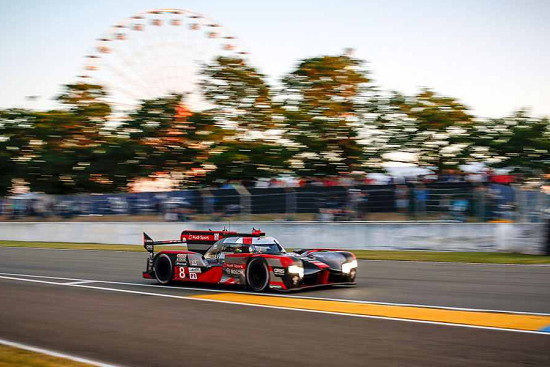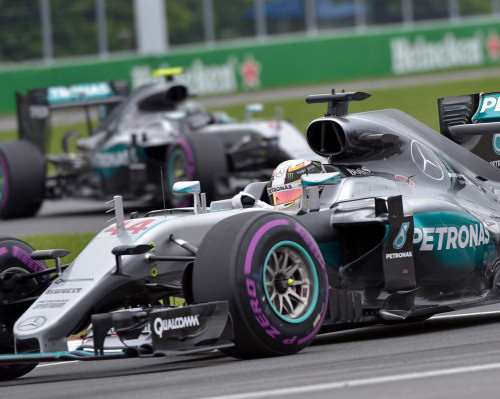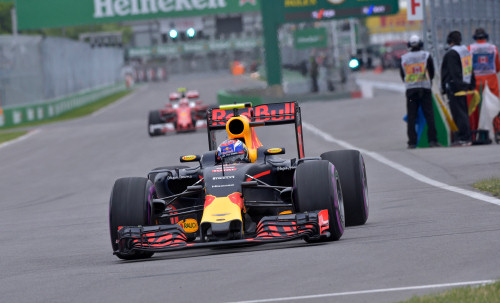The Way It Is/ Living in interesting timesby Gordon Kirby |
 These are without doubt interesting times for motor racing. Race fans around the world are asking many questions about the sport's future as every major category faces changing times and new challenges.
These are without doubt interesting times for motor racing. Race fans around the world are asking many questions about the sport's future as every major category faces changing times and new challenges.
All this was emphasized last week when Audi announced it will withdraw from the World Endurance Championship after eighteen very successful years. Audi has been the driving force behind the WEC during these years fielding a first-class, multi-car team bristling with new technology. Audi established itself as sports car racing's benchmark, dominating Le Mans for many years and also giving our own ALMS series a healthy boost for a few years. But after Porsche decided to return to sports car racing's top category with a modern hybrid LMP1 car it seemed inevitable that Audi's time at Le Mans would soon come to an end. The VW Group's very expensive emission cheating scandal added to the financial pressure on Audi's WEC team and Audi also saw an attractive and much cheaper alternative in Formula E. Jean Todt and the FIA are touting Formula E as the future of the sport and Audi has decided to join the FE bandwagon. So for the next few years Le Mans and the WEC will enjoy just two factory P1 teams from Porsche and Toyota. Motor racing as a whole and sports car racing in particular has always alternately thrived or struggled as a result of major car builders jumping in or out of the sport. Over the decades we've seen a series of booms and busts as the likes of Ferrari, Maserati, Jaguar, Aston Martin, Porsche, Ford, Nissan and many others have come and gone from the sport and sometimes returned. And we've seen similar manufacturer-driven booms and busts over the years in Formula 1, NASCAR, Indy car racing, the world rally championship, etc.  © LAT USA Either way, major manufacturers will continue to race both prototype sports cars and GT cars in the WEC, IMSA and other series around the world because competing with machines that bear some similarity and relevance to the cars they sell remains an excellent marketing and sales tool. Racing also provides an unmatched forum for technology development. IMSA enjoys a thriving GTLM class of course, comprising factory-backed teams from Porsche, Ferrari, Corvette, BMW and Ford. Next year will witness the beginning of a new era of prototype racing for IMSA as P2 cars replace the Daytona Prototype category. Factory-backed P2 cars from Cadillac, Mazda, Nissan and Honda are expected to race next year or in 2018 and it will be interesting to see how IMSA's P2 or DPi category develops in the coming years. The changing turf of P1 and P2 cars in the WEC may prove to be a benefit for IMSA or may be a detriment. Time will tell. IndyCar is going to a common aero kit next year in hopes of reducing costs and attracting a third engine manufacturer to compete against Chevrolet and Honda. IndyCar has also announced it will retain the current Dallara DW12 spec chassis through 2020 while adopting a new Champ Car-like aero package for 2018 with more downforce from the underbody and less from external wings. As everyone knows, these are tough times commercially for IndyCar with tiny TV ratings, small crowds at many races and very little mainstream media coverage outside Indianapolis. Everyone hopes that rule stability and a better aero package will result in a steady improvement in crowds, TV ratings and overall media coverage. NASCAR is much healthier than IndyCar or IMSA but is struggling to find a way to respond to declining TV ratings and crowds. I've written at length over the years about NASCAR's problems. They are deep-seated and will be very difficult to solve requiring much bigger picture thinking than NASCAR's current preoccupation of fiddling with the details. 'The Chase', for example, has become maniacally more confused year by year to the point that it may be driving fans and media away rather than creating more interest as everyone in NASCAR seems to believe. Next year will see the debut of a new Formula 1 with more power, more downforce and more grip from bigger wheels and tires. It would be nice to see less downforce as part of the equation but that's not the case. Lap times are expected to be substantially quicker and the spectacle is also expected to elevate itself a notch or two. So it will be interesting to see if the new formula changes the balance of power in F1 or makes the races more competitive and less predictable.  © Gary Gold I wrote about John Malone and Liberty's takeover of F1 in my column in the November edition of Motor Sport and the poor TV ratings from CotA emphasized the continuing challenges faced by F1 in America. The race was televised on NBC rather than NBCSports providing F1 with an opportunity to reach a wider audience. But it drew no more than an 0.5 rating, less than a quarter the size NASCAR's audience for Talladega on NBCSports at the same time on the same afternoon. If F1 is to become more popular in the USA it's essential to have an American star such as Phil Hill and Dan Gurney in the sixties and Mario Andretti in the seventies. Hill, Gurney and Andretti were true international stars racing all types of cars around the world and there was huge US media coverage of F1 and long-distance sports car racing through the sixties and seventies. But since Andretti's final departure from F1 in 1982 American fans and media have had little or nothing to cheer for or cover. It's stunning to record in fact, that Mario scored the last Grand Prix win by an American driver in the 1978 Dutch GP during his championship season no fewer than thirty-eight years ago. And the last time an American team won an F1 race came the year before when Alan Jones won the Austrian GP aboard a Shadow. Over the last three and a half decades America has been largely absent from F1. Michael Andretti half-heartedly tackled F1 with McLaren in 1993 but failed to finish the year. He made the podium but once, finishing third at the Italian GP in what proved to be his last F1 race. Twenty-three years have passed since that day without another American coming close to an F1 podium. Without doubt the most talented young American open-wheel racer of the moment is Josef Newgarden who has won IndyCar races in the past two years. Newgarden raced in the UK and Europe in 2008, '09 and '10 in Formula Ford and GP3 cars before returning home to win the Indy Lights championship in 2011. He demonstrated tremendous ability in the past two years with Ed Carpenter's small but very effective team and has been signed by Roger Penske for 2017. Given his move to Penske it's doubtful that Newgarden can be lured to F1 but if Malone and Liberty Media are serious about building F1's audience and media coverage in America they must do everything in their power to get an American driver with Newgarden's talent and charm into a top F1 team over the next few years.  © Gary Gold Another matter for Malone and Liberty Media to address is that F1 needs to put on a more competitive show if it's to thrive in America which means fielding more quality teams and cars. Like it or not, NASCAR sets the standard with a thundering field of forty cars and more than twenty teams. F1 will have to head more in that direction if it's to build a serious following in America. In closing, I have to say I hope Formula E is not the future of motor racing. The category leaves me cold and I am mystified with Jean Todt's successful efforts to get so many manufacturers involved in his latest pet project. The electric car market seems to be failing rather than expanding and I believe Formula E will prove to be an equal failure. Finally, I have to make another plaintive plea for improved aesthetics in modern motor racing. The P1 cars raced in recent years by Audi and Porsche are as spectacularly ugly as their performance is breathtakingly impressive. We all know that aerodynamic efficiency is the determining factor in contemporary race car design but many of us would present our own Nobel prize to the designer who can produce a car that is not only effective but beautiful too. |
|
Auto Racing ~ Gordon Kirby
Copyright ~ All Rights Reserved |
